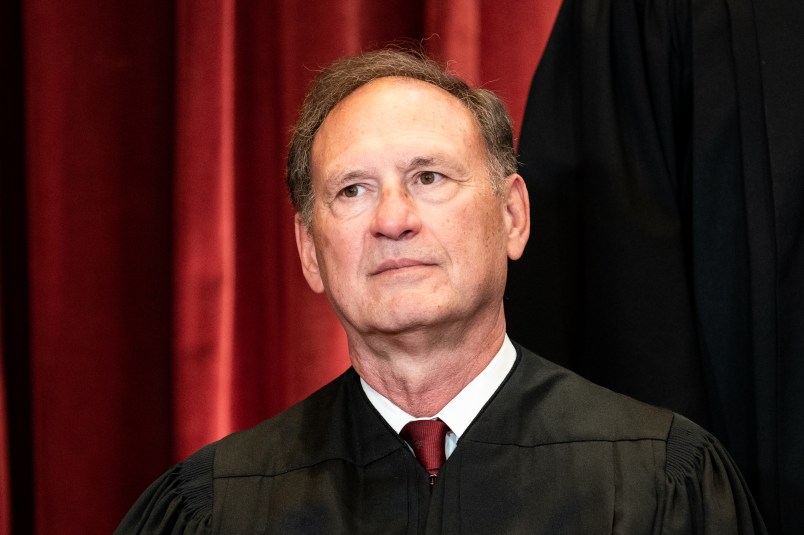In his majority opinion upholding two Arizona voting restrictions Thursday, Supreme Court Justice Samuel Alito laid out several “guideposts” as he made his way toward the conclusion that the restrictions did not violate the Voting Rights Act.
These guideposts were new, and courts could use them to evaluate VRA-related rulings in the future. In her dissent, Justice Elana Kagan described them as invented “extra-textual restrictions” on Section 2 of the VRA, which formed the basis of the lawsuit against the Arizona laws.
And in interviews Thursday, voting rights lawyers told TPM the new guideposts, five in total, could spell deep trouble for efforts to protect ballot access in the face of an increasingly conservative judicial branch.
“The five factors are all stacked in favor of state laws,” said Joshua A. Douglas, election law and voting rights professor at the University of Kentucky College of Law.
Alito justified his novel legal reasoning by noting that this was the court’s first stab at applying Section 2 to voting rules, rather than other issues like redistricting. Therefore, he said, “it is appropriate to take a fresh look at the statutory text.”
“The majority completely ignored decades of precedent interpreting Section 2 of the Voting Rights Act, and stood up new standards that had never before been part of the jurisprudence,” said Wendy Weiser, director of the Democracy Program at the Brennan Center for Justice. The opinion, she said, “dramatically changed the jurisprudence.”
And while lower courts will have the opportunity to interpret Alito’s “guideposts” on their own, Weiser added, “it leads to an approach that is inconsistent with robust protection against discrimination.”
Among Alito’s considerations: The “size of the burden” on voters, the disparity of a rule’s impact on minority voters, whether there are other non-burdensome opportunities to cast a ballot available to voters, the strength of the state’s interests in things such as “preventing election fraud,” and even the degree to which the rule departs from what was “standard practice” in… 1982, when the Voting Rights Act was last amended.
That’s right: The release of “Thriller.” The Argentinian invasion of the Falklands. And… Samuel Alito’s baseline for voting laws.
Douglas referred to one of Alito’s guideposts, “the strength of the state interests,” for which Alito used as an example states’ interest in preventing voter fraud, even though cases of fraud are virtually non-existent.
“A state could justify burdens on the right to vote — even ones that fall along racial lines — by citing this interest,” Douglas said.
It could have been worse: The court’s conservative majority could have demolished Section 2 of the Voting Rights Act just like it did to Section 5 in the infamous 2013 Shelby County v. Holder decision. And as the prolific voting rights litigator Marc Elias noted, “most voter suppression laws are challenged under First, 14th and 15th Amendments,” not the VRA.
But Alito’s “guideposts” mean uncertain times for voting rights advocates trying to chart a path forward.
“They’re sort of rewriting the standard upon which to describe the racial impact of these provisions,” said Robert Brandon, president and CEO of the Fair Elections Center.
“It’s an effort to try to give the impression that they’re carefully thinking about the impact that these provisions might have, but to me, it’s ignoring the reality.”



